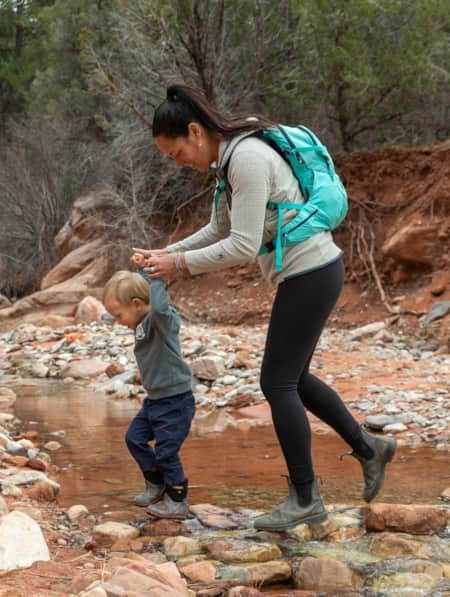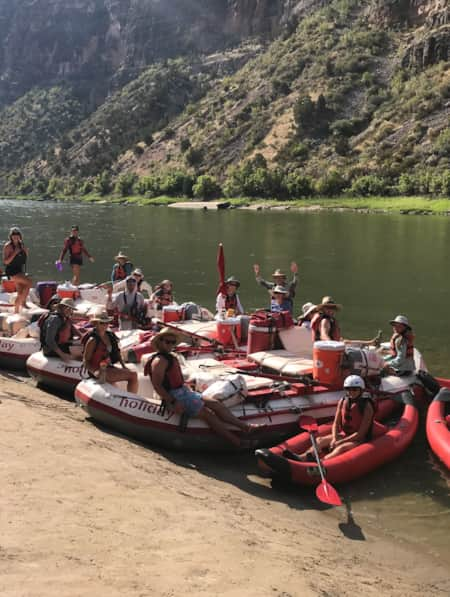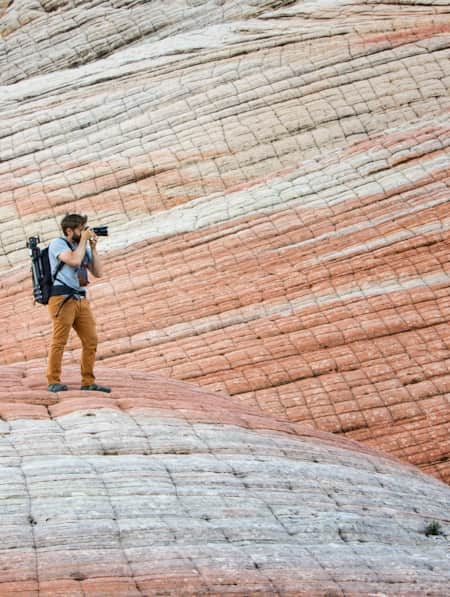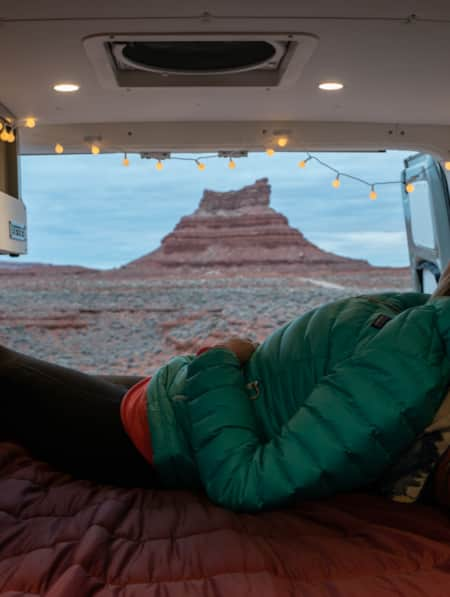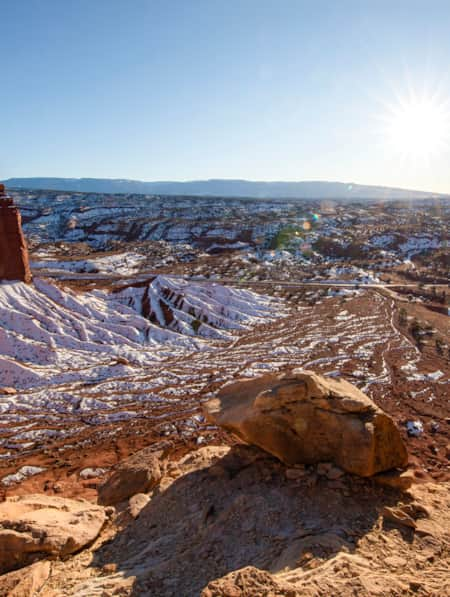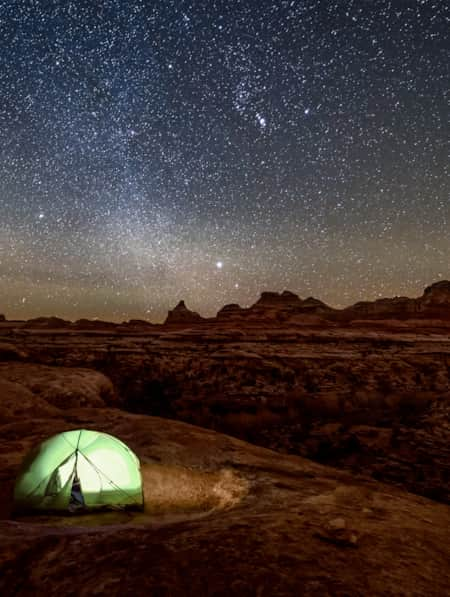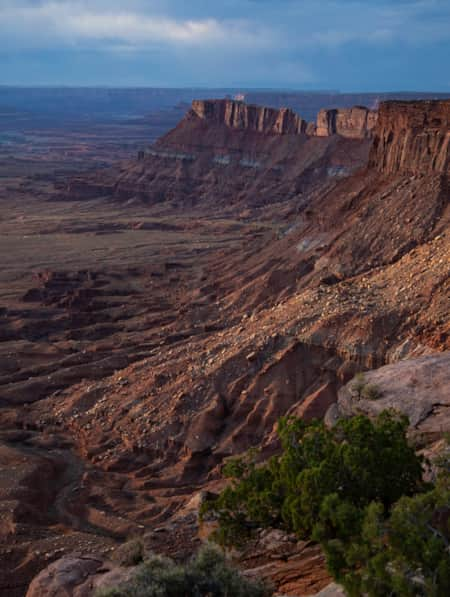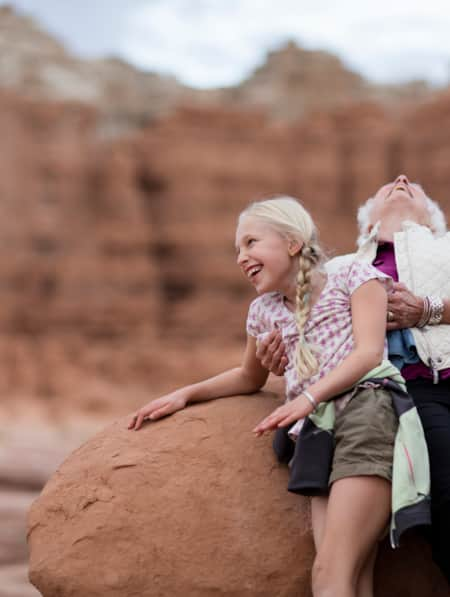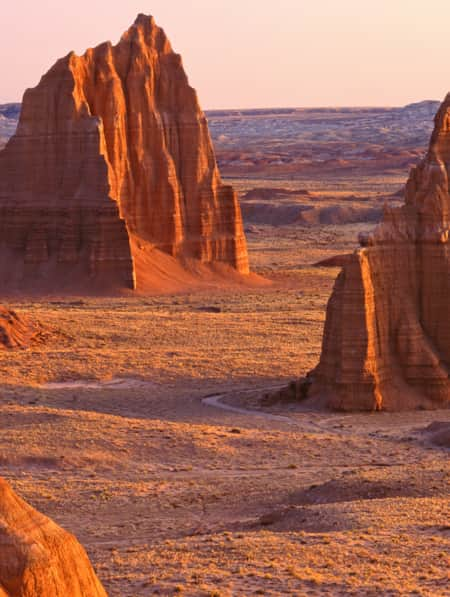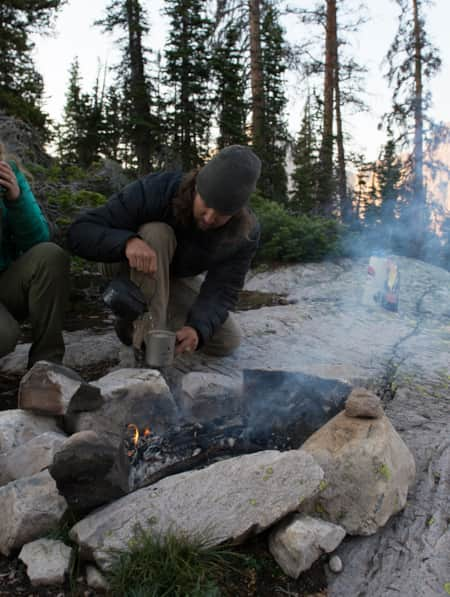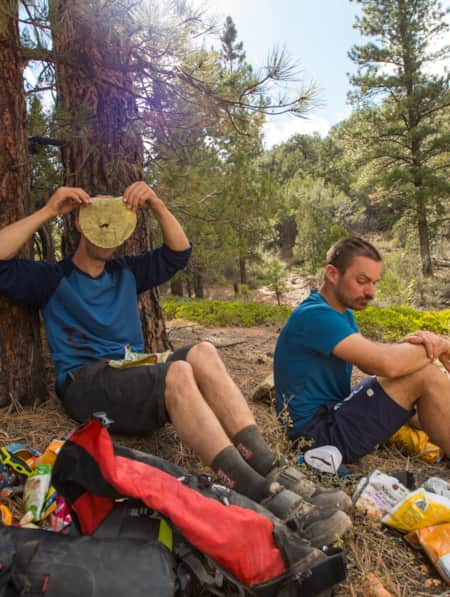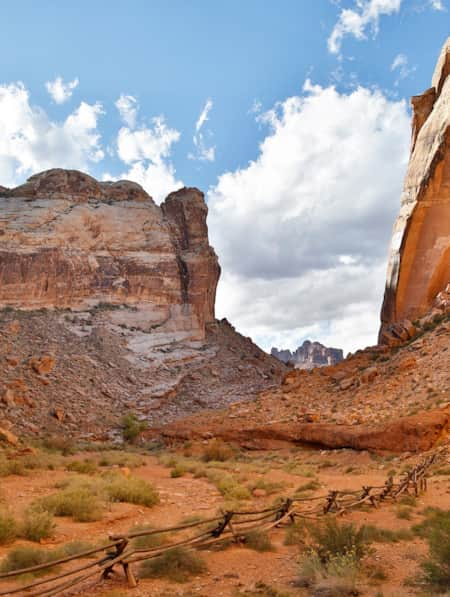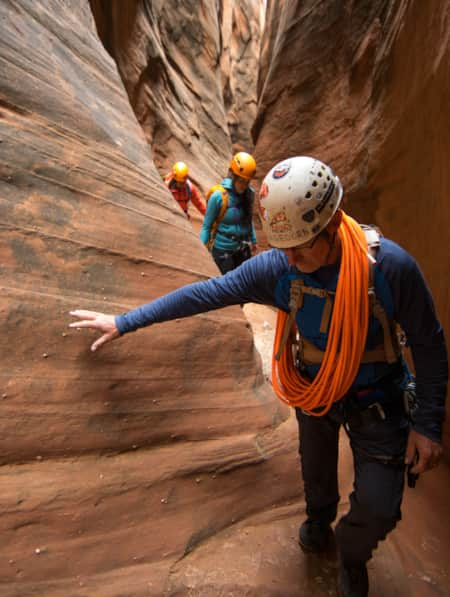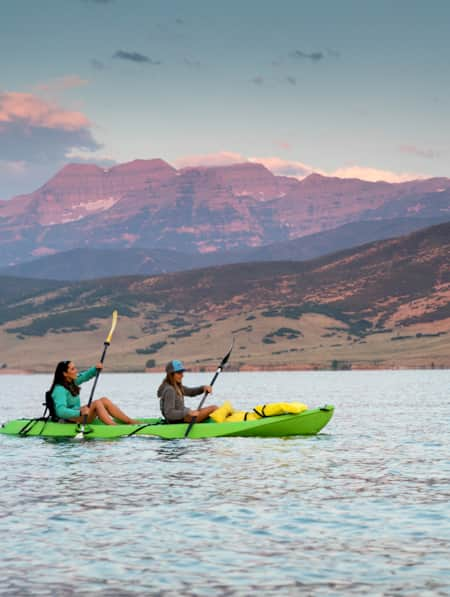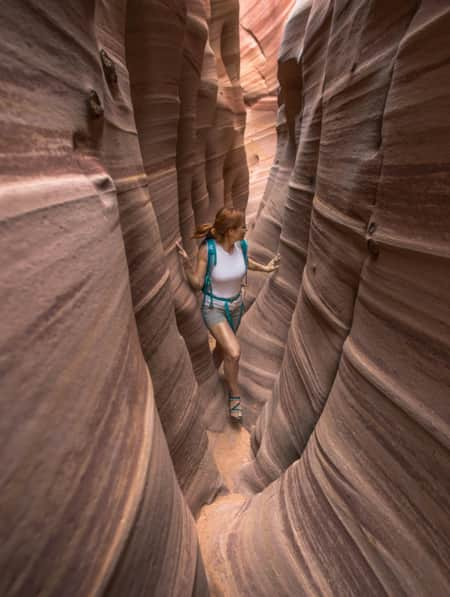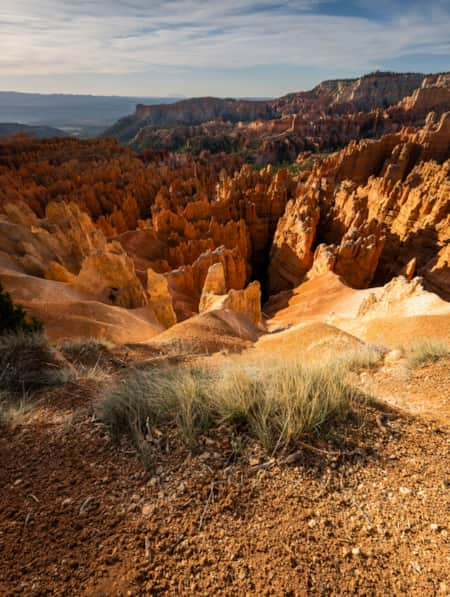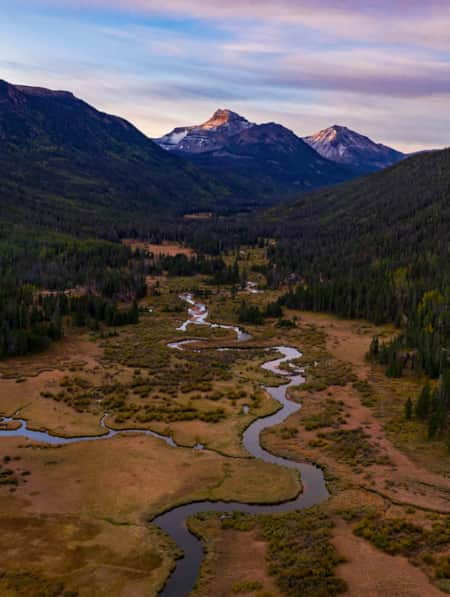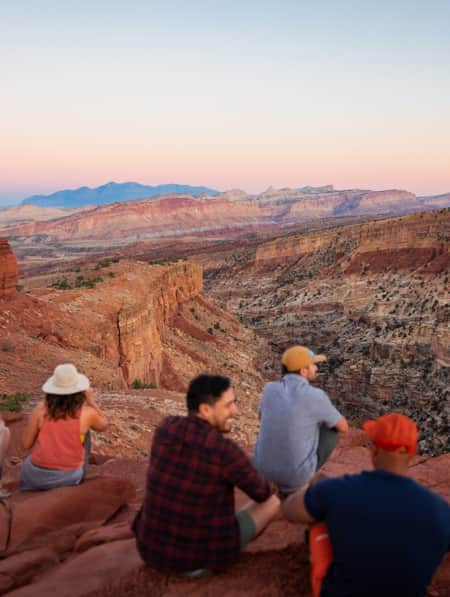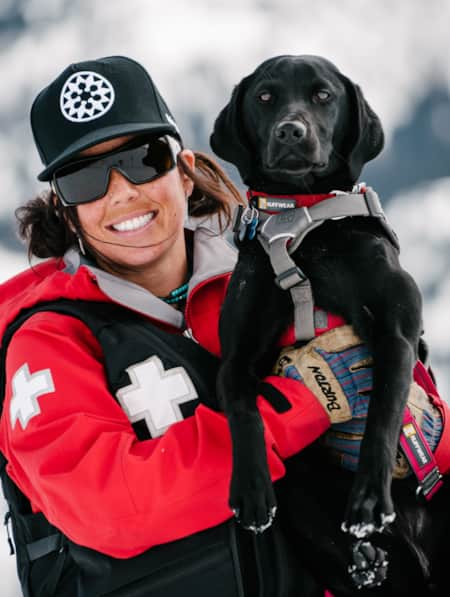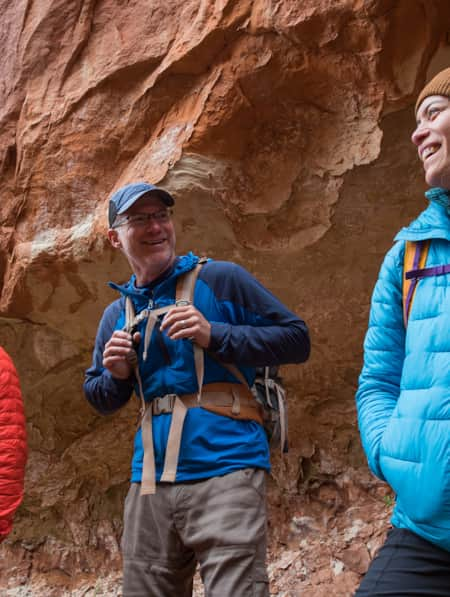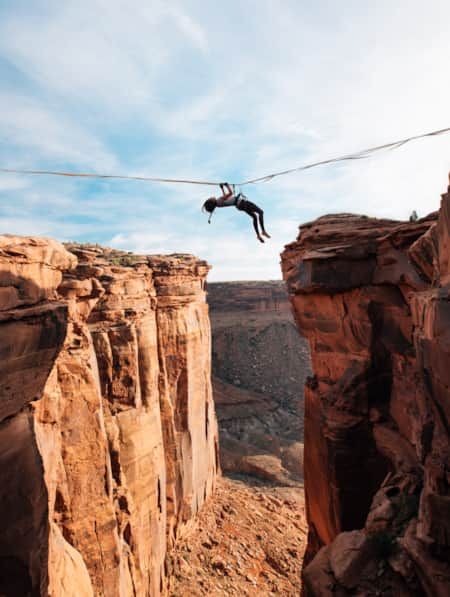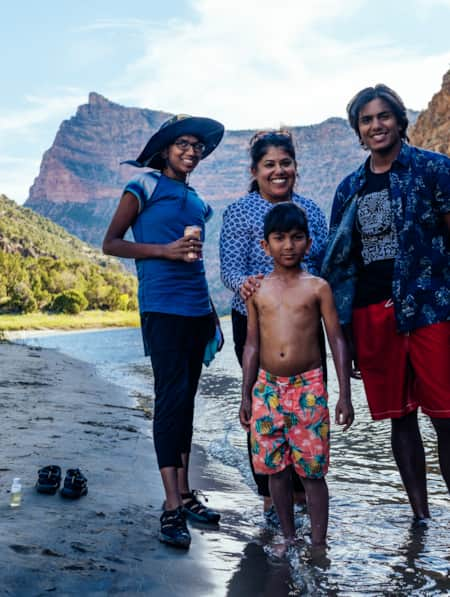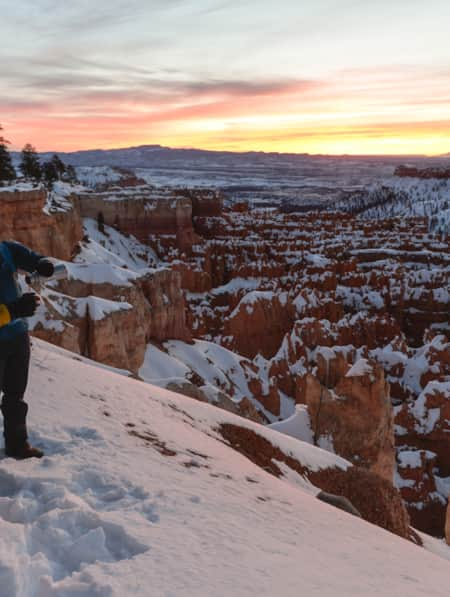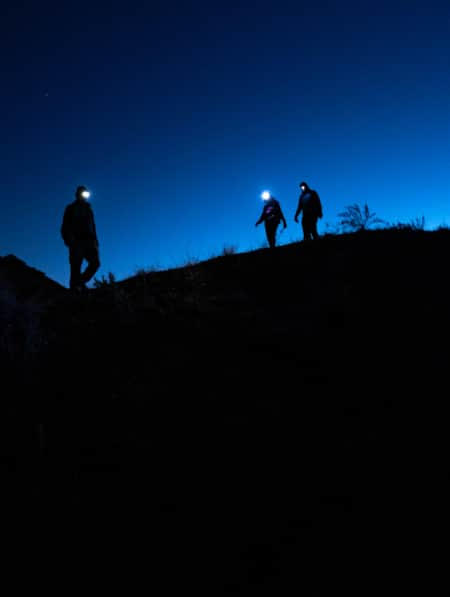A Rural Community Leading the Way in Stewardship and Preservation
During Nine Mile Canyon’s 9th Stewardship Day — part of the three-day SPX Fest — visitors experience rock imagery sites alongside experienced archeologists and dedicated locals in an unparalleled collaborative effort to promote stewardship and preservation. Guests leave with a sense of healing and a greater understanding of this rare Utah landscape.

When Sheryl Jimerez traveled from blistering-hot Arizona to Nine Mile Canyon with her husband, Joe Jimerez, she planned to stay a few weeks.
By the time I talk to her, it’s been six months.
“Why?” I ask, a first-timer in the area myself despite being an eighth-generation Utah. We are both staying at the Nine Mile Canyon Ranch, where cowboy Ben Mead and his wife, Mirna, have taken her on as an extra pair of hands. Earlier that morning, I’d spotted Jimerez chasing cows out of the campground.
Jimerez is battling cancer. She has a steady gaze, hazel-green eyes and a long, copper ponytail. She wears rings on every finger and hiking shoes of an indiscernible color due to wear.
“The canyon teaches us how to survive,” she says with conviction. Between cancer treatments, Jimerez seeks out rock imagery panels, and Nine Mile is home to tens of thousands of pictographs and petroglyphs, making it one of the longest “art galleries” in the world, as some locals like to say. The name’s a misnomer — the canyon stretches 46 miles, not nine. (Read: "The 46 Miles on Nine Mile Canyon")
“I learn something new every day in this canyon,” Jimerez says. Even after three to four hours of hiking per day, there’s always something she hasn’t seen before. Jimerez talks about healing and describes a sense of grounding and ease. And she isn’t the only person I meet to share that feeling. Not by far.
I’m visiting as part of the first-ever SPX Fest, a three-day festival hosted at sites across Carbon and Emery counties in Central Utah. This massive community collaboration aims to promote stewardship (S), preservation (P), and responsible exploration (X). Friday featured activities in Helper where art, amtrak and a riverwalk anchor a historic town’s new identity (Read: "Turning Carbon Into Culture"). And Sunday took visitors to Utah State University Eastern’s Prehistoric Museum in Price and the Cleveland-Lloyd Dinosaur Quarry at Jurassic National Monument. (Read: "A Deep Dig into Utah’s Deep Time")
"It’s not even 8 a.m. on Day 2, Stewardship Day, and I already sense the aura that drove twelve different organizations and eight vendors to put on this ninth annual Nine Mile Stewardship Day."

The three-day SPX Fest in Utah's Carbon and Emery counties aims to promote stewardship, preservation, and responsible exploration.

The annual Nine Mile Stewardship Day draws hosts and guests from all over the country.
It’s not even 8 a.m. on Day 2, Stewardship Day, and I already sense the aura that drove twelve different organizations and eight vendors to put on this ninth annual Nine Mile Stewardship Day, with hosts and guests pilgrimaging from all over the country to attend. Today, the canyon is divided into eight sites, with experts stationed at each one.
At mile-marker 44, I find archeologists Jamie Hollingsworth and Ralph Burillo with the PaleoWest archeological group at the Daddy Canyon Recreation Site. They both wear wide-brimmed hats and sunglasses. Ahead of their station, a dirt trail forks, leading to towering red cliffs dotted with pictographs. The air smells of sage and spiny greasewood, and a cloudless sky vaults overhead. Hollingsworth, who has Navajo heritage, has participated in the educational aspect of Stewardship Day since its inception. She describes the event as “synergistic” and says the canyon “snags you.” She keeps “finding ways to be involved because it’s so special.” As she speaks to visitors about best practices of how to visit an archeological site, Rick Chapoose, a member of the White River Ute Tribe, arrives. He carries a wooden box of objects: mountain sheep figures made of willow, etched hair ornaments made of bone and handmade beaded necklaces. Chapoose likes to “jump in,” as he describes, and is a key member of Stewardship Day and youth education initiatives. Contemporary tribes that value the canyon as a place of spiritual heritage include the Ute Indian Tribe, Northern Cheyenne and various Pueblo communities, including the Hopi — all of whom have been active in protection efforts. (Read: "Native Nations in Utah")
Rasmussen Cave stands to the left of the PaleoWest station with a pigmented rock figure covered up with a spray painted “NO TRESSPASSING” warning, disturbing well beyond its misspelling; not all landowners seem to view the canyon the way the Meads do as owners of the Nine Mile Canyon Ranch. Across from this troubling site stands a facility owned and operated by the oil industry, a stark contrast to the layered rock and evocative imagery throughout the canyon, some estimated at 10,000 years old. All this is a conversation starter, reminding me of my anxieties about climate change. Just that week, I’d been scrolling through the headlines — unprecedented drought and wildfires, horrible air pollution, followed by an announcement that Harvard would disinvest from fossil fuels. The juxtaposition is ripe for reflection about stewardship of past, present and the rapidly-changing future.

I’m struck that this festival is different from other events I’ve attended in rural communities. Stewardship isn’t a concept thrown around lightly. Themes of responsibility and preservation make up the beating heart of everything here, uniting this ambitious effort. Though education anchors Stewardship Day, Pam Miller — a founding member of the Nine Mile Canyon Coalition when it began assembling in 1991 between Carbon and Duchesne Counties — tells me that protecting the canyon has been a long-time endeavor.
“There was a need,” Miller says, as she describes the “hard years” when dedicated, heroic people sacrificed and came together to protect the canyon — landowners, professionals, educators, professors, museum people, etc. Through compromise and partnership, they eventually got a paved road to reduce dust damage to the panels and improve accessibility. Land development initiatives, for better or for worse, fund much of the excavation projects that happen today.
These passionate stewards of Nine Mile Canyon, like the other community members involved in the SPX Fest, invert every city-slicker stereotype ever hurled at rural communities. I’ve never met a more invested, engaged group of people, protecting the priceless histories that make up their home through collective preservation. Miller confirms what I’ve sensed since arriving: “We are the locals. We live here.” They care, and they are eager to help others care, too — no matter when they come. Miller says “we’re working now to hit the education mission strong” to help interpret these incredible sites for visitors.
I encounter travelers from all walks of life: an elk hunter eager to show me a video of a turkey he’d seen wandering the brush, a woman visiting a friend from New Hampshire, local couples, motorcyclists and young families. Mark Austin brings his bike and plans to cycle a “lovely” 22 to 23 miles since the terrain is flatter and less trafficked than other canyons in Utah. I also meet two Layton High School students, Ella (16) and Abby (14), who come every year with their mother, a former archeologist. They bring Fremont duck decoy models made of reed as well as clay figures to share with everyone they meet.
There seems to be something for everyone, perhaps reflected in the layers of history (Read: "Reef Walking, Petroglyphs and Bones"). As I drive along a road lined with blooms of yellow rabbitbrush, I’m looking at rocks with rippled texture from when an ocean existed here millions of years ago. At mile-maker 45.9, Tim Riley and Jody Patterson — experts from USU’s Prehistoric Museum wearing teal SPX t-shirts — show me a glass case of Cheerio-like beads they’ve excavated by the thousands from the nearby Fremont village. At mile-maker 38.8, I peer through binoculars at a beehive-shaped granary across the way on a precarious cliff ledge, where Fremont peoples used to store their grain and seed for the upcoming harvest. At mile-maker 38.2, I’m now at Nutter Ranch, learning about infamous men such as Butch Cassidy (who, some locals claim, did not die in Bolivia) and Preston Nutter, who rode a mule over 300,000 acres to supervise the running of countless cattle. Underrepresented history also finds a place here. At mile-maker 27.7 I pull up to a picnic area to hand-grind corn and learn about the Buffalo Soldiers, the all-Black cavalry and infantry regiments stationed primarily in the West following the Civil War. The 9th Calvary created the original 1886 road through the canyon, explains Reilly Jensen — stewardship officer for the Nine Mile Coalition. Buffalo Soldiers also installed the wood and metal poles, still visible along the road, that made up a telegraph system. Groups like Sema Hadithi (which translates as “tell the story”) work to raise more awareness of the Buffalo Soldiers’ presence in the collective narrative of Utah.
"Underrepresented history also finds a place here. At mile-maker 27.7 I pull up to a picnic area to hand-grind corn and learn about the Buffalo Soldiers, the all-Black cavalry and infantry regiments stationed primarily in the West following the Civil War."

Contemporary tribes that value the canyon as a place of spiritual heritage include the Ute Indian Tribe, Northern Cheyenne and various Pueblo communities, including the Hopi — all of whom have been active in protection efforts.

In Nine Mile Canyon, visitors are not obstructed from the layers of history.

Day 2 of SPX Fest had Nine Mile Canyon divided into eight sites, with experts stationed at each one.
When I return to Nine Mile Canyon Ranch, people gather around the vendors or listen to the live music down in the picnic area in preparation for a Dutch oven dinner as I fall into a shaded rocking chair and take in the vibrant scene. After a brief rain, a double rainbow arcs overhead — as if on cue. It’s all so absurdly magical.
Soon, Margie Nash takes a seat beside me. She gets the magic. Nash has fine brown hair with bangs and a coalition sweatshirt. She started as a grant writer for Project Discovery, a partnership between the Nine Mile Coalition and local high schools to empower less privileged students to camp in the canyon for a week doing experiential learning. As Nash learned more, she grew excited, like there were “fireworks radiating” from her head. She built on the good work of others to spearhead Stewardship Day by inviting the students (during non-COVID years) to help educate the public alongside archeologists in an open, public event. Not only does this center future generations as stewards, it’s also a brilliant teaching strategy for the public and the students — people remember 90 percent of what they teach rather than what they absorb through textbooks. Many of their students had transformative experiences and have gone on to doctoral programs and excavation work.
Nash also describes a pre- and post-survey the coalition gives to Stewardship Day guests, asking them to rank their understanding of the importance of the rock imagery sites. Without fail, the survey moves a few digits in the direction of “importance” by the time people leave. Understanding leads to appreciation.
The shift indicated in the survey is why so many experts voyage from many states around, the vast majority as volunteers: to thwart vandalism and looting, to teach people how to responsibly engage with what the canyon offers by not touching the art or leaving trash behind and by appreciating and respecting its context — what Utahns call Forever Mighty. Because once it’s gone, it’s gone — and the pictographs are slowly fading. Though the petroglyphs and pictographs in Nine Mile Canyon are worthy of the Louvre, velvet ropes don’t distance the viewer. When I see the iconic Great Hunt Panel, a hunter surrounded by dozens of chiseled bighorn sheep across a darker, sandstone edifice, I know I stand where a Fremont stood. The context cannot be stripped from the work. In Nine Mile Canyon, visitors are not obstructed from the layers of history, inviting an invisible conversation between art and viewer about the strange, shared experience of being alive in this wild world and the mysterious meaning of that experience. My skin tingles.

A double rainbow arcs overhead — as if on cue.
Photo: Rachel Rueckert
"Without fail, the survey moves a few digits in the direction of “importance” by the time people leave. Understanding leads to appreciation."
I settle in for the night at the Nine Mile Canyon Campground, a campground that only exists because Mirna Mead had the vision to clear out the trash heap and tractor graveyard leftover from the former ranchers and instead pictured the cabins, playground, shower facilities and clean campsites that exist today. Dazzling stars and the visible Milky Way shine, as unobstructed as the rock imagery earlier. As I lay down, I feel the breadth and depth of the words spoken today. Stewardship, preservation, exploration — the goals of the SPX Fest, yes. But also, something more. The “ease” and healing that cancer-battler Jimerez spoke of, a “click” into the human story that Nash narrated and the “snag” of something special that Hollingsworth described. I close my eyes, hearing the archeologists celebrate around a campfire before they’ll drive miles and miles back to where they came from, excited to return again next year.
Out of cell service, a needed reprieve from the barrier of screens, I’m incapable of doom-scrolling headlines on my phone. Instead, I’m compelled to listen, to breathe deeper, to take in the night air and the smell of sage, cottonwood and “how-to” lessons from the rock.


